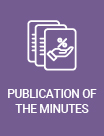Seminario de Microeconomía Aplicada - Genetic Endowments, Income Dynamics, and Wealth Accumulation Over the Lifecycle
El seminario de Microeconomía Aplicada del Banco de la República es un espacio para discutir trabajos en progreso en las diferentes áreas de la microeconomía aplicada como economía laboral, organización industrial, economía de la salud, economía agrícola, economía de la educación, desarrollo económico, crimen, economía pública, medio ambiente, entre otras.
Nicholas W. Papageorge: is the Broadus Mitchell Associate Professor of Economics at Johns Hopkins University. His research focuses on human capital, broadly construed to include education, health, socio-emotional skills, and genetic endowments. Nick's work often uses large observational data sets to examine how people make decisions to invest in their human capital and to study variation in returns to different forms of human capital (for example, by employment sector, racial groups and socioeconomic status). A focus of this work is on how people make health decisions in various contexts, including HIV/AIDS, mental health conditions, COVID, and use of addictive substances. Nick is also associate director of the Poverty and Inequality Research Lab (PIRL) at JHU, an interdisciplinary institute that facilitates mixed methods in the social sciences. In particular, it seeks to use qualitative data collected via open-ended interviews to aid in the specification of dynamic structural models of decision-making to explain, e.g., education and health disparities across socio-demographic groups.
Resumen del documento: We develop and estimate a life-cycle consumption savings model in which observed genetic variation is allowed to affect wealth accumulation through several distinct channels. We focus on genetic markers that predict educational attainment, aggregated into a predictive index called a polygenic score. Based on substantial reduced form evidence, we allow variation in these endowments to affect earnings, the disutility of labor, stock market participation costs, and idiosyncratic rates of return on risky investments. The model incorporates endogenous retirement and a realistic social security system. Parameter estimates suggest that, in addition to earnings, genetic differences are significantly associated with both the disutility of labor and risky asset returns. Counterfactual policy exercises indicate that two ways to lower costs of an aging population (extending the age of retirement or cutting social security benefits) have different distributional consequences with respect to genetic heterogeneity. The results highlight how untargeted policies can significantly alter genetic gradients in economic outcomes.
.
Tiempo de exposición: 1:30 p. m. a 3:00 p. m.














.png)

































